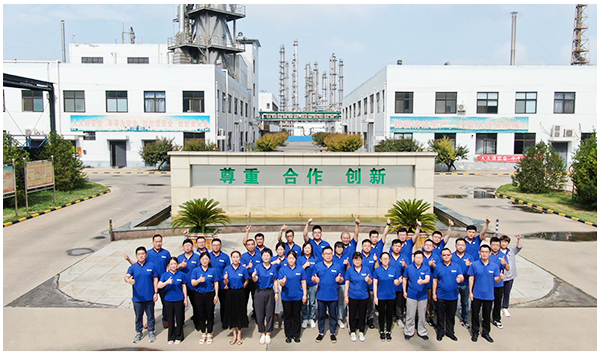
News
אוג . 15, 2024 18:27 Back to list
Factors Influencing Chelant Corrosion Prices and Their Impact on Industry Trends and Applications
Understanding Chelant Corrosion Causes, Effects, and Economic Implications
Chelants, complexing agents capable of binding metal ions, play a critical role in various industrial processes. They are widely used in water treatment, pharmaceuticals, agriculture, and chemical manufacturing. However, the relationship between chelants and corrosion, specifically chelant corrosion, is a growing concern that requires attention. This article explores the phenomenon of chelant corrosion, its causes and effects, and its economic implications in various industries.
What is Chelant Corrosion?
Chelant corrosion refers to the degradation of metal surfaces due to chemical reactions involving chelating agents. When chelants are introduced into an environment containing metal ions, they can bind these ions more effectively than the protective oxide layers typically found on metals. This reaction can lead to accelerated corrosion rates, particularly in environments with high concentrations of chelants or reactive metal ions.
Common scenarios where chelant corrosion occurs include the use of chelating agents in water treatment facilities to remove and sequester metal contaminants, in cleaning agents that facilitate the removal of scale and deposits, and in cooling systems to prevent mineral buildup. While these agents serve crucial functional purposes, their unintended side effects on metal infrastructure can lead to costly maintenance and repair.
Causes of Chelant Corrosion
The primary cause of chelant corrosion is the aggressive nature of chelating agents. For instance, when chelating agents such as EDTA (ethylenediaminetetraacetic acid) are present in high concentrations, they can disrupt the passive oxide layer on metals such as steel and stainless steel. This disruption exposes the underlying metal to aggressive environmental conditions, leading to pitting, stress corrosion cracking, and ultimately, structural failure.
Furthermore, certain conditions can exacerbate chelant corrosion. Elevated temperatures and specific pH levels can enhance the reactivity of chelating agents, increasing their potential to corrode metals. Additionally, the presence of oxygen and other corrosive media can further facilitate the corrosion process, creating a synergistic effect that significantly shortens the lifespan of metal components.
chelant corrosion price

Effects of Chelant Corrosion
The effects of chelant corrosion can be severe, impacting both equipment longevity and operational efficiency. In industries such as oil and gas, pulp and paper, and power generation, corroded infrastructure can lead to unplanned shutdowns, product losses, and costly repairs. The deterioration of auxiliary systems, such as pipelines, pumps, and heat exchangers, due to chelant corrosion can significantly affect productivity and safety.
Moreover, the environmental impact cannot be overlooked. Increased corrosion leads to the release of metal ions into the surrounding environment, which can harm aquatic ecosystems and contaminate water supplies. As environmental regulations become stricter, the economic fallout from chelant corrosion may worsen as industries face both remediation costs and regulatory fines.
Economic Implications
The economic implications of chelant corrosion are multifaceted. Direct costs arise from maintenance, replacement of corroded components, and downtime associated with unplanned repairs. Indirect costs include lost productivity, safety risks, and potential environmental penalties. For businesses, the challenge lies in balancing the effective use of chelating agents with the need to maintain the integrity of their metal infrastructure.
Investing in corrosion-resistant materials, improving monitoring technologies, and optimizing the dosage of chelants can mitigate some of the adverse effects of chelant corrosion. Education and awareness of the potential risks associated with chelating agents are crucial for organizations that utilize these compounds.
In conclusion, while chelants serve essential functions across various industries, their potential to cause corrosion cannot be ignored. Understanding the mechanisms of chelant corrosion, acknowledging its implications, and making informed choices are vital for minimizing its impact on equipment and the environment. As industries seek to optimize their processes, the challenge remains to strike a balance between using effective chelating agents and protecting valuable infrastructure.
-
Polyaspartic Acid Salts in Agricultural Fertilizers: A Sustainable Solution
NewsJul.21,2025
-
OEM Chelating Agent Preservative Supplier & Manufacturer High-Quality Customized Solutions
NewsJul.08,2025
-
OEM Potassium Chelating Agent Manufacturer - Custom Potassium Oxalate & Citrate Solutions
NewsJul.08,2025
-
OEM Pentasodium DTPA Chelating Agent Supplier & Manufacturer High Purity & Cost-Effective Solutions
NewsJul.08,2025
-
High-Efficiency Chelated Trace Elements Fertilizer Bulk Supplier & Manufacturer Quotes
NewsJul.07,2025
-
High Quality K Formation for a Chelating Agent – Reliable Manufacturer & Supplier
NewsJul.07,2025
